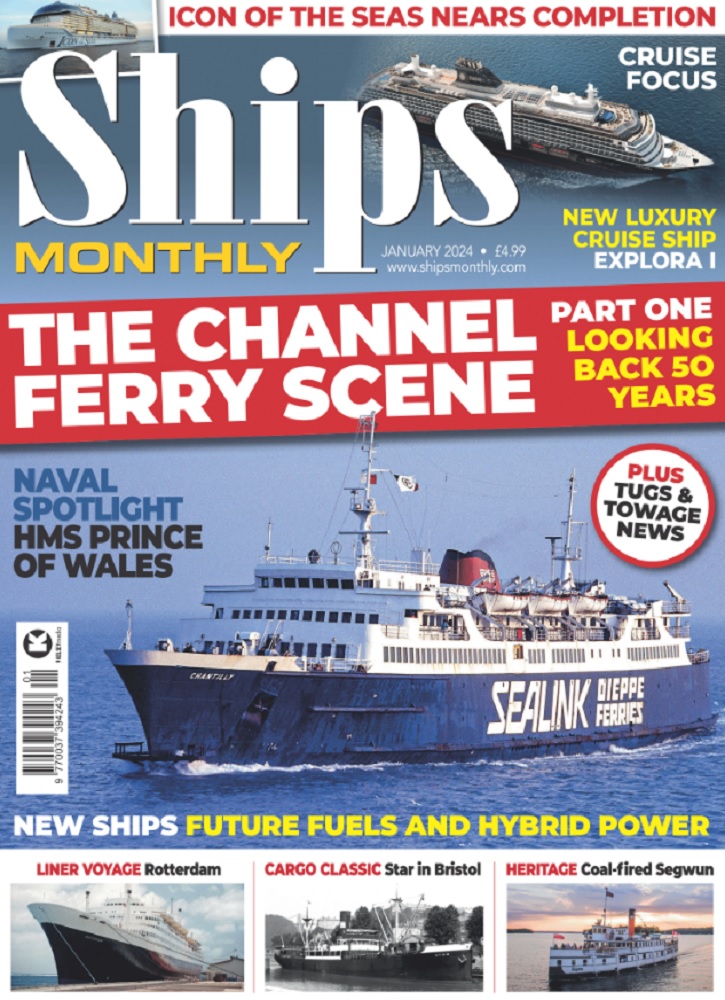With the recent announcement of Cunard’s two special events in 2015 to be held in its spiritual home of Liverpool in celebration of the company’s 175th anniversary, Captain Christopher Rynd, master of Queen Mary 2, talks to Byron Clayton about his career and the ship he now commands while crossing the Atlantic westbound.
When did you first go to sea?In 1970, at the age of 17, right after high school, with the Union Steamship company of New Zealand. My father was a navy man and things at home were referred to in nautical terms. After completing my cadetship I joined Oronsay, my first passenger ship, in 1974 as a junior third officer keeping watch.
When did you become a captain?I received my Master’s Certificate in 1979 from the City of London Nautical College. In 2000 I received my first permanent command on board the 1984-built Royal Princess, operated by Princess Cruises. I moved from Princess to Cunard in 2005 to take command of Queen Elizabeth 2. My first command of Queen Mary 2 came in 2006, although I was involved with the construction of Queen Victoria in the interim and had a short stint back aboard Artemis (previously Royal Princess and my first command). In April 2011 I was appointed Commodore of Cunard Line.
What adjustment did you make coming to Queen Mary 2?Apart from size, these bigger ships are so much easier to handle than the older, smaller ones. QE2 was a very difficult ship to manoeuvre, and the instrumentation was so basic that you really had to do it by eye. QE2 would do really well in a straight line but she would give a lot of trouble when you needed to manoeuvre. There were times when you would put the rudder hard over and the engines full ahead and nothing would happen. QE2 also had very weak bow thrusters, a single rudder and her propellers turned inward, which meant you had no coupling force when going one aheadand one astern.

If you were advising a shipyard on building a new ocean liner for the next decade and they were starting with the blueprints of QM2, what changes would you recommend?First, I would like bow thrusters that can be used at any time. On QM2 we have to slow down before we can open the thruster doors and it would be better if we could engage them already at a higher speed. The old Oriana had guillotine doors for her bow thrusters, which were more practical. She was a wonderful sea ship and very advanced for her time. Second, I think we could do a better job with the gangways by making them wider and electronic.
Do you often use the marine gas turbines aboard QM2?We have six sources of power: four diesels and two gas turbines. QM2 has a top speed of 29 knots and can do 19 knots on only three diesel engines. She can do 24 knots on three diesels and one gas turbine.
No doubt you have seen a lot of rough weather in your career. What is the worst you can remember?The worst weather I experienced was when I was a cadet in a small ship that traded across the Tasman Sea. We experienced some very violent seas and the ship had no stabilisation, so we were rolling considerably. You can’t cook in that kind of weather, so we went days without hot food, and sleeping was especially difficult. On QM2 I have seen some very rough weather – force 11 winds with 9m to 10m swells. She moves about and there are times when it is uncomfortable, but you have the knowledge that there is no ship that can handle it better. But generally we avoid bad weather, not only because it is bad for the passengers, but also because the ship is less efficient.
What are the most significant improvements you have seen during your career at sea?Satellite navigation is very useful. I first used it when on Oriana, and it was in the shape of a DPD Computer the size of a door, which would provide a printout every hour or so. Electronic charts which instantly identify your location are also very useful. We still keep up the old methods, but electronic charts are a great benefit

Read A View From The Bridge every month in Ships Monthly – subscribe here


